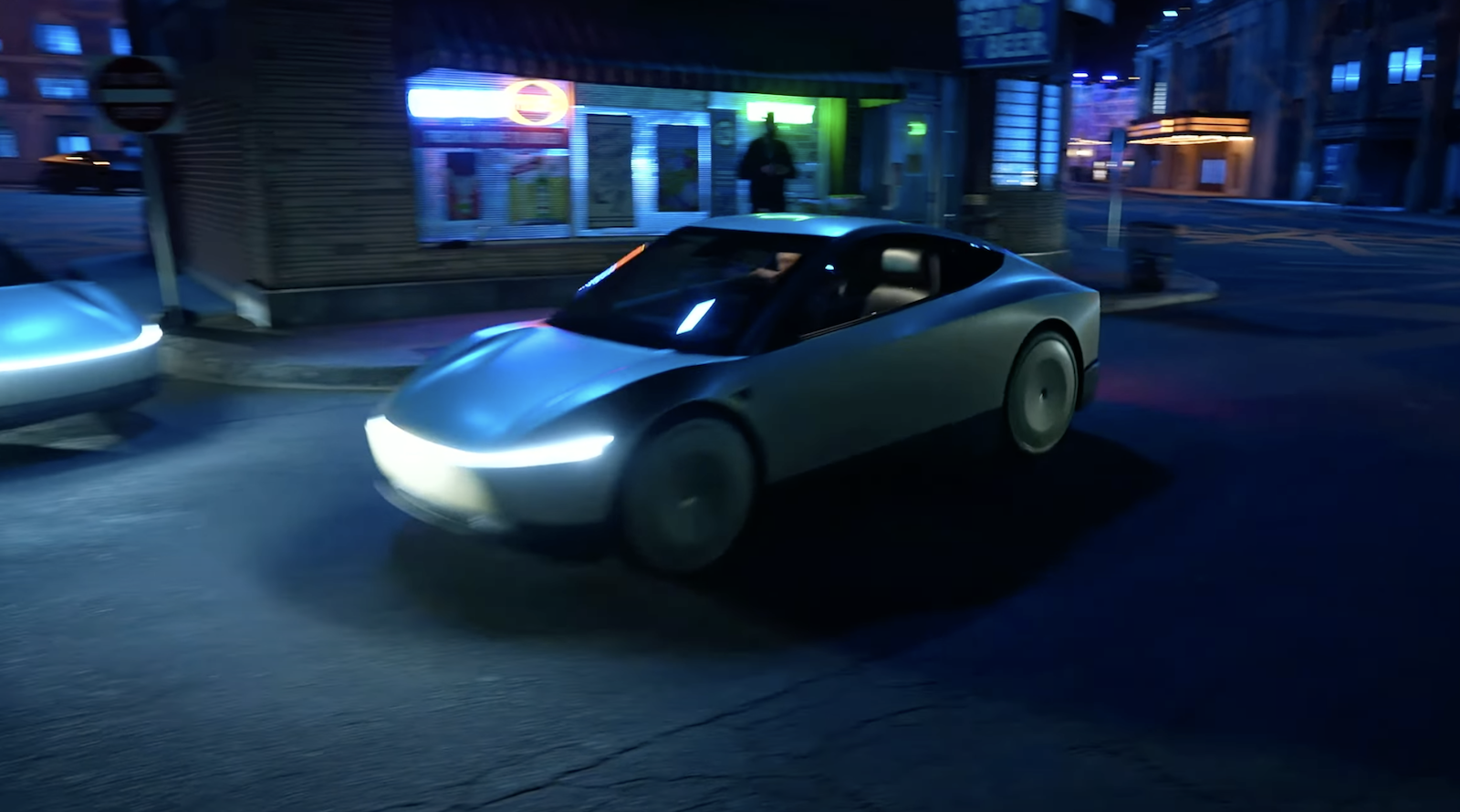
A recent video at Out of Spec Reviews shows us something really cool Kyle found at Overland Expo Mountain West. Unlike many of the vehicles out there, it’s made to not burn a single drop of gasoline, despite being a fully functional RV! It’s the result of a partnership between GMC and EarthCruiser, a prominent builder of overlanding campers and RVs. Here’s the embedded video, but be sure to scroll down for a summary and some commentary:
One of the things that makes this overlanding RV so unusual is that it was built by GMC and EarthCruiser, but it’s not deeply controlled by GM. Instead of wanting to sell all of them through dealers and wanting control over the project, GM lent its engineering staff to the collaboration without much expected in return. EarthCruiser will maintain full control over the design, and will sell it either as part of a full vehicle or as an add-on that anybody can have installed on their existing Hummer EV.
If you saw this on the road and didn’t know what it was, you might think it came out of a factory in one piece, and that’s because the companies worked so closely to make sure it all worked well together. Paints are an exact match, aerodynamics are optimized (as much as they can be for a huge vehicle like this), and everything looks like it belongs.
All together, it’s a very capable RV, let alone an EV. Like a stock Hummer EV, it has a huge battery pack and a lot of room. It’s not the most efficient EV, only getting around 300 miles from a 200+ kWh battery pack, but this plays in its favor in RV form because it doesn’t lose much (because it was already pretty bad on efficiency). Despite the size, it’s still very capable due to the electric torque, advanced computer-controlled motor coordination, and rear-wheel steering. In other words, it acts like a vehicle that’s much smaller, and thus doesn’t feel much different with this camper on its back.
The installation appears to be almost fully reversible. Everything attaches without permanent modification with the exception of a modified front T-Top roof, where they added a hatch to allow people to climb directly from the front passenger seat to the RV (when folded out). If you had a spare T-Top panel, you could swap it out and nobody would ever know the camper had ever been on it after removal.
On the exterior, there are several enclosed cargo areas, as well as an electrical access door and a plumbing access door. On one side, you can store recovery gear and other things you’d want outside, and on the other side, there’s an outdoor shower that folds out, and is powered by an efficient electric water heater that draws only around 400 watts. The onboard battery is about 6 kWh, and has about 600 watts of solar power charging it. Other electric appliances, like an electric cooktop, heater, and compressor fridge, also run from the battery.
Hummer hasn’t offered V2L capability yet, but once it does, it’ll be possible to charge the camper’s battery pack directly from the vehicle’s battery pack. But, in the meantime, EarthCruiser has tried charging the Hummer EV from the house battery, and when it’s full, it provides about 1 mile per hour of sunshine that strikes the solar panels, so it’s possible to add a tiny bit of range from the solar panels (if you don’t need the energy for something else, of course).
The interior isn’t huge, but has enough room for a couple of people to sleep, cook, eat, shower (inside or outside, use the bathroom, and enjoy nature through the huge windows in the folding portion’s tent sides. It’s built with premium marine-grade materials that don’t look like they’ll wear out or fall apart (like is the case with many cheaper RVs). Up inside the top (which rises in about 40 seconds using electric motors), there’s a large bed, the hatch to the interior of the Hummer, and even some small storage space under the foam bed.
Everything is made for easy dismantling and service, which makes it possible to easily work on any aspect of the RV. Major systems like electrical, plumbing, and appliances are all accessible simply by removing a few screws/bolts using an Allen key, and pulling a panel or two out of the way.
Getting one installed will probably require a trip to Bend, Oregon, in your Hummer EV, but other installation and purchasing options may be announced once it’s up for sale. Final pricing isn’t available yet, but Kyle estimates that it’ll likely be available for around $100,000. Combine that with the Hummer EV and you’ll pay around $200,000 for a complete electric RV, which is pretty cheap if you know how much RVs go for these days!
The companies are probably going to offer the Hummer EV at some point as an integrated package that one can finance as an RV instead of having to shell out cash for the camper after getting into an insane payment for the Hummer. RV loans tend to allow for much longer terms, meaning that this package could end up being affordable for many more people than you probably think.
When asked about other vehicles coming in the future, EarthCruiser’s rep said, “We want to do more with electric.” Specific plans weren’t revealed, but similar campers are probably going to be available in the future for other vehicles, like the Rivian R1T, Ford F-150 Lighting, and others.
Some Thoughts On This Rig
One thing that really stood out to me is how useful they’ve made the Hummer EV. We’ve bagged on the vehicle repeatedly for being basically the least efficient electric vehicle around, but the inefficiency has left a lot of room to do something like this without making it much worse. Instead of being an expensive “mall crawler” that people will buy for bragging rights, this turns the Hummer EV into something extremely useful off-road and for trips into the backcountry.
It’s also good news for everyone with a Cybertruck order in. The Hummer EV doesn’t have a big bed with straight sides to make it compatible with standard slide-in truck campers, but it seems that overland and RV builders are preparing to offer things like this tailored to non-standard trucks. So, if EarthCruiser itself doesn’t offer something like this for the Cybertruck, someone else probably will soon.
Featured image: screenshot from the embedded YouTube video above (fair use, commentary).
I don’t like paywalls. You don’t like paywalls. Who likes paywalls? Here at CleanTechnica, we implemented a limited paywall for a while, but it always felt wrong — and it was always tough to decide what we should put behind there. In theory, your most exclusive and best content goes behind a paywall. But then fewer people read it! We just don’t like paywalls, and so we’ve decided to ditch ours. Unfortunately, the media business is still a tough, cut-throat business with tiny margins. It’s a never-ending Olympic challenge to stay above water or even perhaps — gasp — grow. So …




